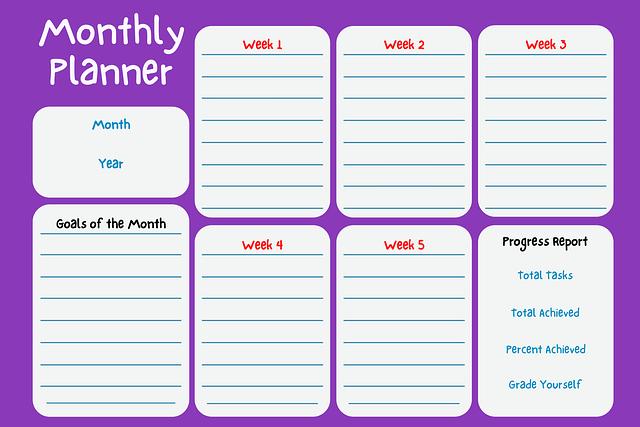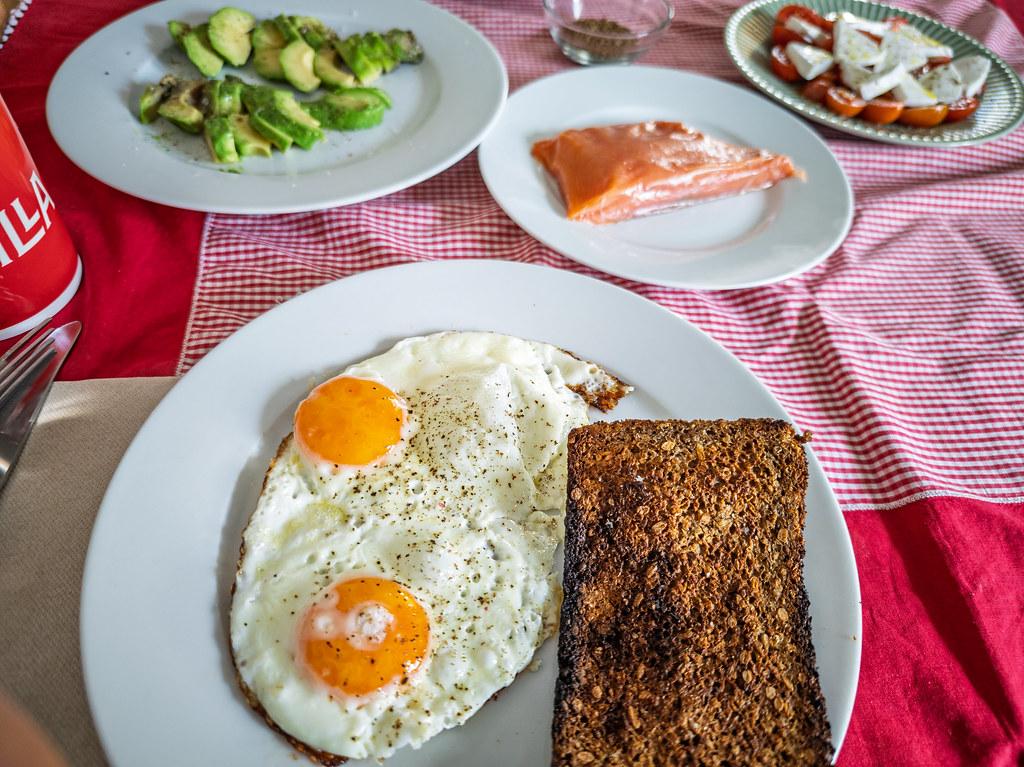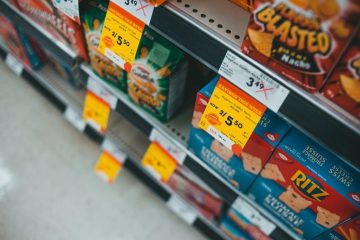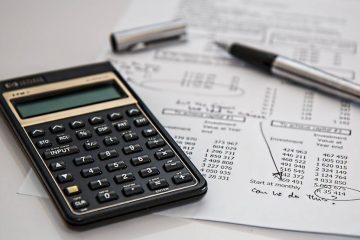Table of Contents
- Understanding Your Monthly Food Budget for One Person
- Essential Strategies for Grocery Shopping on a Budget
- Meal Planning Tips to Maximize Your Food Dollar
- Nutritious and Affordable Cooking Ideas
- Staying on Track: Tools for Monitoring Your Food Expenses
- Q&A
- In Summary


Understanding Your Monthly Food Budget for One Person
Establishing a realistic food budget is crucial for managing your finances effectively, especially when you’re responsible for your meals alone. Start by examining your monthly income and fixed expenses, and allocate a specific portion to food. A common guideline is to dedicate around 10-15% of your net income to groceries and dining out. This percentage can vary based on your personal circumstances and preferences, but keeping it within this range helps ensure that you’re not overspending.
Once you have a budget in mind, it’s essential to track your spending to identify patterns and areas for improvement. Utilize apps or a simple spreadsheet to categorize your expenses into groceries, dining out, and snacks. By doing this, you can visualize where your money goes and adjust accordingly. Here’s a simple breakdown for your reference:
| Category | Monthly Budget | Example Expenses |
|---|---|---|
| Groceries | $200-$300 | Fresh produce, meats, grains |
| Dining Out | $50-$150 | Takeout, restaurants |
| Snacks | $30-$50 | Chips, candy, beverages |
Additionally, consider incorporating cost-saving strategies to make your budget stretch further. Planning meals in advance and creating a shopping list can significantly reduce impulse purchases at the grocery store. Sourcing ingredients in bulk, especially non-perishables, and taking advantage of seasonal produce can also minimize costs. Keep in mind, cooking at home not only saves money but also allows for healthier meal options, enhancing both your wellness and financial well-being.


Essential Strategies for Grocery Shopping on a Budget
Adopting effective strategies while grocery shopping can significantly impact your monthly food budget. Start by planning your meals for the week, which not only reduces impulsive purchases but also helps you create a tailored shopping list. Prioritize seasonal and local produce, as these options are usually cheaper and fresher. If you’re unsure what’s in season, a simple search will yield a wealth of resources that guide you based on your location. Consider bulk buying non-perishable items such as grains, canned goods, and frozen vegetables, which can save you money in the long run.
Another vital aspect of budget shopping is comparing prices across different stores. Utilize store apps or websites that list current sales and promotions. Keep an eye out for generic or store-brand products that often cost less than their name-brand counterparts while typically offering similar quality. Don’t shy away from using coupons—whether digital or paper—since they can add up to significant savings. You can create a habit of checking coupon websites or looking for flyers in your mailbox to ensure you’re maximizing your savings.
Budget Tracking is essential for maintaining control over your expenses. Keeping an organized log can help you see where your money goes and identify areas for improvement. You can use a simple HTML table to outline your weekly spending and adjust your habits accordingly:
| Item | Price | Store |
|---|---|---|
| Brown Rice | $2.50 | Supermarket A |
| Chicken Breasts | $5.00 | Supermarket B |
| Broccoli | $1.80 | Supermarket A |
| Canned Beans | $0.89 | Supermarket C |


Meal Planning Tips to Maximize Your Food Dollar
Meal planning is a strategic skill that can significantly stretch your food budget, especially for individuals navigating their monthly expenses. By taking the time to plan out meals ahead of time, you can prevent impulse purchases and make more calculated decisions at the grocery store. Consider these approaches:
- Plan around sales: Check your local grocery store’s weekly sales flyer and plan meals that incorporate discounted items. This way, you’ll maximize savings while enjoying a variety of foods.
- Embrace batch cooking: Prepare larger quantities of meals and store leftovers in portion-sized containers. Not only does this make for quick and easy lunches or dinners, but it also reduces food waste.
- Incorporate versatile ingredients: Choose ingredients that can be used in multiple dishes throughout the week, such as grains, legumes, or seasonal vegetables. This practice simplifies shopping and enhances flexibility in your meal prep.
Another effective strategy is to create a detailed grocery list based on your planned meals and stick to it! This approach helps minimize unnecessary purchases and prevents wandering the aisles without a specific purpose. Tracking your pantry items and expired goods is equally important. Here’s a simple table to help you manage your pantry inventory:
| Ingredient | Quantity | Expiration Date |
|---|---|---|
| Brown Rice | 2 cups | 2024-09-15 |
| Canned Beans | 5 cans | 2025-12-01 |
| Frozen Vegetables | 3 bags | 2023-11-20 |
don’t forget to focus on seasonal produce! Fresh fruits and vegetables are not only healthier but also more affordable when they are in-season. Planning meals around these ingredients can provide nutritional benefits while keeping your costs down. Plus, you might discover new favorite recipes that adapt easily to the changing seasons. Here are a few seasonal produce tips:
- Visit local farmers’ markets: They often offer fresh produce at competitive prices.
- Freeze excess: Buy in bulk when items are on sale and freeze extras for later use.
- Try new recipes: Use seasonal ingredients to experiment with your cooking and keep things interesting.


Nutritious and Affordable Cooking Ideas
Cooking for one on a budget doesn’t mean sacrificing nutrition or flavor. There are many creative ways to prepare healthy meals without breaking the bank. Start by stocking your pantry with essential staples like whole grains, canned legumes, and seasonal vegetables. These ingredients can be the foundation of numerous dishes that are both filling and nutritious. For example, a simple stir-fry with brown rice, assorted veggies, and chickpeas can provide a hearty meal packed with protein, fiber, and vitamins.
Another excellent idea for budget-friendly cooking is to embrace the art of meal prep. By dedicating a few hours a week to preparing meals in bulk, you can save both time and money. Choose versatile recipes, such as veggie soups or casseroles, which often taste even better after a day in the fridge. You can make a large batch and portion it out for lunch and dinner throughout the week. Don’t forget to utilize your freezer for long-lasting meals – items like homemade tomato sauce or chili can be frozen in single servings for quick future meals.
exploring local markets can offer fresh produce at lower prices compared to grocery stores. Consider creating a weekly meal plan based on what’s in season to take advantage of these savings. Below is a sample table to help organize your meals for the week:
| Day | Meal | Key Ingredients |
|---|---|---|
| Monday | Veggie Stir-fry | Brown rice, mixed vegetables, soy sauce |
| Tuesday | Chickpea Soup | Chickpeas, tomatoes, spinach, spices |
| Wednesday | Quinoa Salad | Quinoa, cucumbers, bell peppers, lemon |
| Thursday | Pasta Primavera | Pasta, seasonal vegetables, olive oil |
| Friday | Homemade Chili | Ground turkey, beans, onions, spices |
| Saturday | Omelette | Eggs, mushrooms, peppers, cheese |
| Sunday | Smoothie Bowl | Banana, yogurt, oats, berries |


Staying on Track: Tools for Monitoring Your Food Expenses
Keeping tabs on your food expenses is essential for maintaining a healthy budget. There are several effective tools available that can help you track what you spend on groceries and dining out. Utilizing mobile apps dedicated to budgeting can streamline the process. Some popular options include:
- Mint: Offers a comprehensive overview of your finances, including food costs.
- You Need a Budget (YNAB): Focuses on proactive budgeting, encouraging you to allocate funds for food before spending.
- GoodBudget: Uses the envelope budgeting system, allowing you to assign portions of your budget specifically for food.
In addition to apps, maintaining a spreadsheet can be an effective method for visual learners. You can set up columns for each food category and record your daily expenses. This allows you to review your spending patterns over time. A simple table could look like this:
| Date | Item | Cost |
|---|---|---|
| 01/01 | Groceries | $50 |
| 01/02 | Takeout | $20 |
| 01/03 | Snack | $5 |
Lastly, consider using a receipt scanner app. These applications allow you to capture and categorize your grocery and meal expenses by simply scanning your receipts. This not only keeps your records digital but also helps you analyze your spending habits over time. Keeping a clear visual representation of your expenses can motivate you to stick to your food budget and even try new recipes that fit within your financial plan.




0 Comments